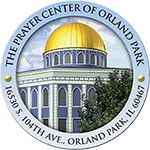Article #2. Tafseer and Translations of the Qur’an
Scholars of the Qur’an agree that each word in the Qur’an is uniquely selected and cannot be replaced with similar words without losing some of the intended meaning. Many of the verses that carry scientific information used words that are infrequently used in the Quran. Therefore, one should be careful in interpreting such Qur’anic verses based only on one (tafseer) or translation, without understanding the actual Arabic text and having adequate understanding of the science stated in these verses. Many of the translations and interpretations (tafaseer) are done by Islamic scholars who are not technically scientists, with the intention to convey the general meaning to a general audience. Therefore, the technical meaning of some of the verses may not be readily obvious to somebody who is not skilled in the field. Those who translated the Qur’an to other languages worked very hard to produce accurate translations. The Arabic text of the Qur’an IS the Qur’an. Interpretation and explanations of the Qur’anic verses that carry scientific knowledge present a special challenge. This is particularly true for the verses that address science, and what scientists are working on today. Therefore, the scientists of today can contribute significantly to the proper understanding of such verses, and the Qur’an can contribute to the scientists’ understanding of the universe. For example, consider verse number 33 in Chapter 21 (21:33).
This Qur’anic verse states that the sun and the moon are (1) moving (swimming), and (2) each has its own path. The Qur’an is not intended to be a Physics book. It states the information in a brief and succinct manner to establish the “sign” for people to consider that the Qur’an is the word of ALLAH (subhanahu wata’ala). In this verse, the Qur’an used the Arabic words Falak and Yasbahoon in describing the movement and trajectory of the sun and the moon. The word Falak commonly means orbit and Yasbahoon means swimming. In other words, the Qur’an says that the sun and the moon each swims in its own orbit. Until recently, orbital motion was not known in relation to the movement of the sun, moon, planets and stars. Therefore, some differences in the translation of this verse exist. Consider the following two recent translations of this verse (21:33): 
- The website Quran.com – Sahih International (http://quran.com/21 ) translated it as: And it is HE who created the night and the day and the sun and the moon; all [heavenly bodies] in an orbit are swimming. (21:33).
- Zaki (Zaki, “Gracious Quran” by Dr. Ahmad Z. Hammad, volume I, 2006), translated it as: For HE is the one who created the night and the daylight and the sun and the moon each within a course is swimming on through the spheres as preordained (21:33).
The first translation used the word orbit while the second used the word sphere. Orbit describes a two-dimensional circular or semicircular (elliptical) field. The moon has an essentially circular orbit with an eccentric factor (deviation from circular) of only about 0.05. A sphere represents a three-dimensional field with a circular cross section. Astronomers talk about a “celestial sphere” which is an imaginary sphere with earth sitting at its center. The moon appears to move completely around the celestial sphere once in about 27.3 days. The translations give the general meaning. These two translations appear to complement each other. To a person skilled in the field of planetary motion he/she can appreciate the level of details in the succinct Quranic description.
By Bassam Jamil Jody, Ph.D




